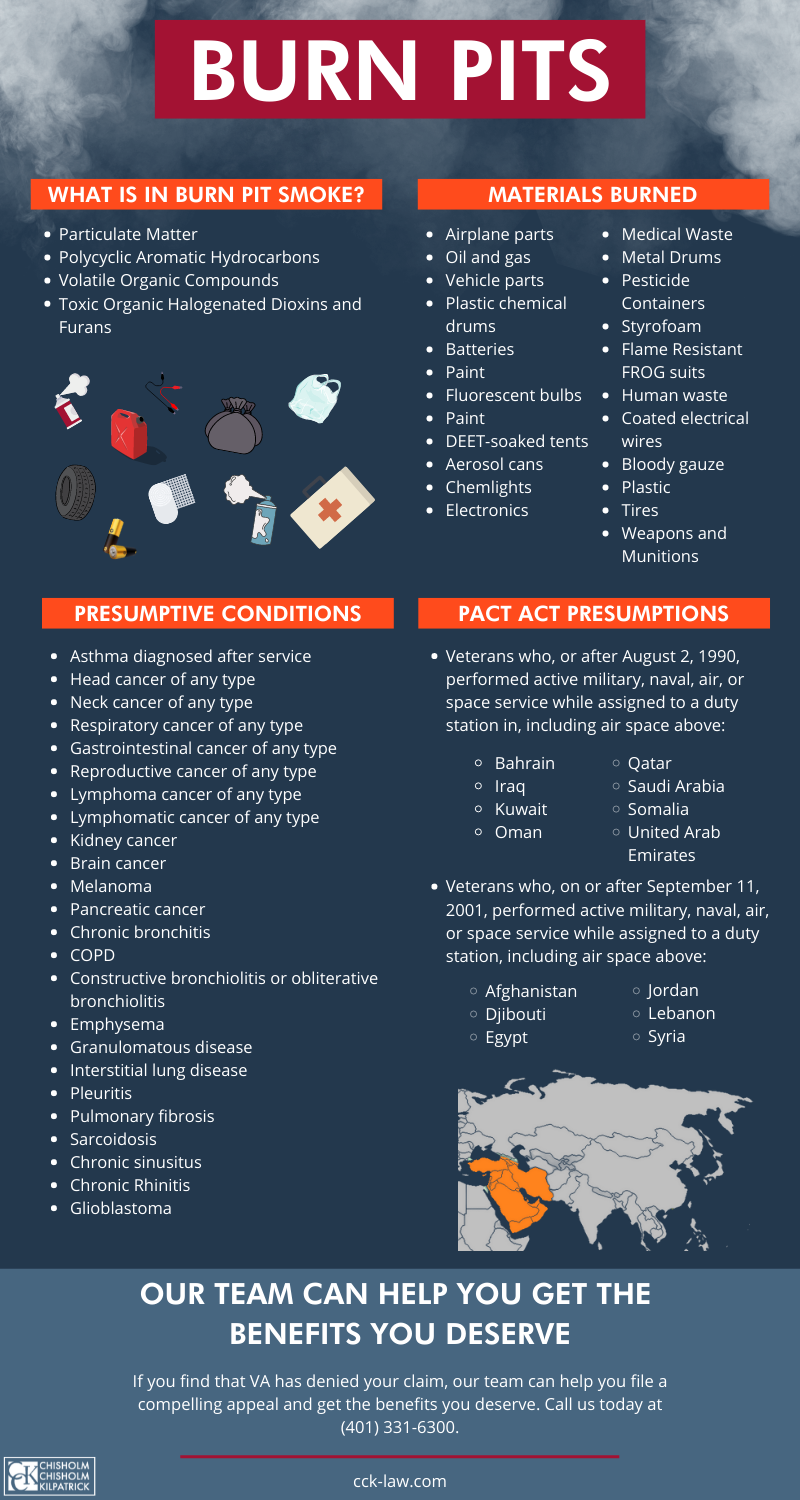VA Disability Benefits for Granulomatous Disease (CGD)

Chronic granulomatous disease, or CGD, is a disorder that can have serious adverse health effects. Some veterans may have complications with CGD as the result of their military service. If you are a veteran who developed chronic granulomatous disease as the result of your military service, you may be entitled to compensation through VA disability benefits.
What is Chronic Granulomatous Disease?
Chronic granulomatous disease is an inherited primary immunodeficiency disease, meaning that it is most often inherited and it increases the body’s susceptibility to infections that can be caused by bacteria and fungi. A granuloma is a group of immune cells that form in response to an inflammatory stimulus, like bacteria and fungi.
As CGD is an autoimmune disease, people who have chronic granulomatous disease often cannot fight off common germs and get sicker than those without an autoimmune diseases. Having CGD can make it difficult to produce neutrophils (i.e., cells that produce hydrogen peroxide). Hydrogen peroxide is used by the immune system to fight off bacteria and fungi.
Symptoms of CGD
- Fever
- Swollen lymph glands
- Runny nose
- Skin irritation, often categorized by rashes, swelling, irritation, and redness
- Stomach pain
- Vomiting
- Bloody stools or diarrhea
Diagnosing CGD
To diagnose chronic granulomatous disease (CGD), a doctor may order certain tests such as neutrophil function tests, dihydrorhodamine 123 (DHR) tests, or genetic testing. Doctors may also review a person’s family and medical history, since CGD is usually inherited. Sometimes, a physical exam may also be performed to help diagnose CGD.
Treatment for CGD
The goal of treatment for CGD is to manage symptoms and avoid infection. Some forms of treatment may include:
- Antibiotic Therapy – To prevent bacterial and fungal infections, a doctor may prescribe continuous antibiotic therapy. Antifungals may also be prescribed to prevent fungal infections.
- Interferon-gamma – Interferon-gamma injections can help boost cells in a person’s immune system to fight infections.
- Stem Cell Transplantation – Sometimes, stem cell transplantation can be a cure for CGD. However, this can depend on a variety of circumstances such as prognosis and donor availability.
Gene therapy is also currently being studied as a possible treatment for CGD.
Service Connection for Veterans with Chronic Granulomatous Disease
Certain aspects of military service can worsen symptoms and cause infections for people who experience chronic granulomatous disease. Certain exposures, like exposure to burn pits or Agent Orange, can also aggravate CGD.
In order to be awarded service connection for CGD, the veteran usually needs to provide three things:
- A current diagnosis of chronic granulomatous disease;
- An in-service event, illness, or injury that caused or contributed to the veteran’s CGD;
- A nexus, which links the veteran’s CGD to the in-service stressor.
In some instances, veterans may be eligible for presumptive service connection relating to their CGD.
Presumptive Service Connection for Chronic Granulomatous Disease
Recently, the Honoring Our PACT Act created a presumption of service connection for granulomatous disease. To be eligible, veterans need to be considered a “covered veteran.” A covered veteran is one who served:
- On or after August 2, 1990, with active military, naval, air, or space service while assigned to a duty station, including the airspace above:
- Bahrain
- Iraq
- Kuwait
- Oman
- Qatar
- Saudi Arabia
- Somalia
- United States Emirates
- On or after September 11, 2001, with active military, naval, air, or space service while assigned to a duty station, including the airspace above:
- Afghanistan
- Djibouti
- Eqypt
- Jordan
- Lebanon
- Syria
- Yemen
- Uzbekistan

Burn Pits and Chronic Granulomatous Disease: Understanding the Connection
Granulomatous disease is one of the many conditions that have been linked to military burn pit exposure. Many who were exposed to burn pits during their service have gone on to develop serious health conditions, often conditions affecting the respiratory system.
What are Military Burn Pits?
Burn pits are large pits that were used by the U.S. Military to dispose of waste in the post-9/11 era. Waste such as plastics, rubber, petroleum, medical waste, human waste, and more were burned in these pits.
Burn pits were used commonly throughout places such as Iraq and Afghanistan in the post-9/11 era during Operations Iraqi and Enduring Freedom.
Although burn pits were effective in reducing waste, the practice created large plumes of toxic smoke which was problematic in places such as the Middle East, as the desert wind carried the smoke for miles. Breathing in this smoke was dangerous and led to many respiratory ailments, such as chronic granulomatous disease.

Compensation and Pension (C&P) Exams for Chronic Granulomatous Disease
If a veteran files a claim for VA disability benefits for chronic granulomatous disease, then VA may request that the veteran attend a Compensation and Pension, or C&P, exam. A C&P exam is an exam performed by a VA examiner, or VA-contracted examiner, with the purpose of gathering evidence about the veteran’s disability. During the exam, the examiner will gather evidence to determine if service connection is warranted and to later establish a rating.
With exams for chronic granulomatous disease, the examiner may perform various respiratory tests to determine how well a veteran’s lungs are functioning. These tests could include:
- Forced Vital Capacity
- Forced Expiratory Volume in 1 Second (FEV1)
- Diffusion Capacity for Carbon Monoxide by the Single Breath Method (DLCO(SB))
- Exercise testing
The results of these tests can be used later to assign a VA disability rating.
VA Disability Ratings for Chronic Granulomatous Disease
Chronic granulomatous disease can be rated under several different diagnostic codes in the VA schedule of ratings. Below are some examples:
Diagnostic Code 6235
This code is used to rate rhinosinusitis, whether autoimmune, granulomatous, or caused by other circumstances. This rating is assigned using § 4.87 Schedule of Ratings for ear, nose, and throat. The ratings are as follows:
- 100% – This rating is given to veterans while receiving systemic immunosuppressive treatment, or for a period of six months are cessation of treatment
Diagnostic Code 6521
This diagnostic code is for injuries to the pharynx specifically, which can occur if a person has chronic granulomatous disease. The rating criteria instructs VA to assign a 50 percent rating for veterans who experience:
- Stricture or obstruction of the pharynx or nasopharynx; OR
- Absence of soft palate secondary to trauma, chemical burn or granulomatous disease; OR
- Paralysis of soft palate with swallowing difficulty (nasal regurgitation) and speech impairment.
Diagnostic Code 6524
This diagnostic code is used to evaluate those who experience granulomatous rhinitis. If a veteran experiences this, they may receive any of the following ratings:
- 100% – assigned to veterans with Wegner’s granulomatosis or lethal midline granuloma.
- 20% – assigned to veterans who experience “other types of granulomatous infection.”
Diagnostic Code 6828
This code is used for veterans who experience eosinophilic granuloma of the lung. The code uses the same rating criteria as interstitial lung disease
- 100%
- FEV-1 less than 50 percent of predicted value; OR
- Diffusion Capacity of the Lung for Carbon Monoxide by the Single Breath Method (DLCO(SB)) less than 40 percent predicted; OR
- Maximum exercise capacity less than 15 ml/kg/min oxygen consumption with cardiorespiratory limitation; OR
- Cor pulmonale; OR
- Pulmonary hypertension; OR
- Requires outpatient oxygen therapy.
- 60%
- FVC of 50 to 64 percent; OR
- DLCO(SB) of 40 to 55 percent predicted; OR
- Maximum exercise capacity of 15 to 20 ml/kg/min oxygen consumption with cardiorespiratory limitation.
- 30%
- FVC of 65 to 74 percent predicted; OR
- DLCO(SB) of 56 to 65 percent predicted.
- 10%
- FVC of 75 to 80 percent predicted; OR
- DLCO(SB) of 66 to 80 percent.
Getting Accredited Representation for Chronic Granulomatous Disease Appeal
Sometimes establishing service connection for chronic granulomatous disease can be challenging. If you are a veteran experiencing these challenges, the experienced veterans’ advocates at Chisholm Chisholm & Kilpatrick may be able to help. Our team can help build your appeal and guide you through every step of the process. Call our office today for a free case consultation.
About the Author
Share this Post
